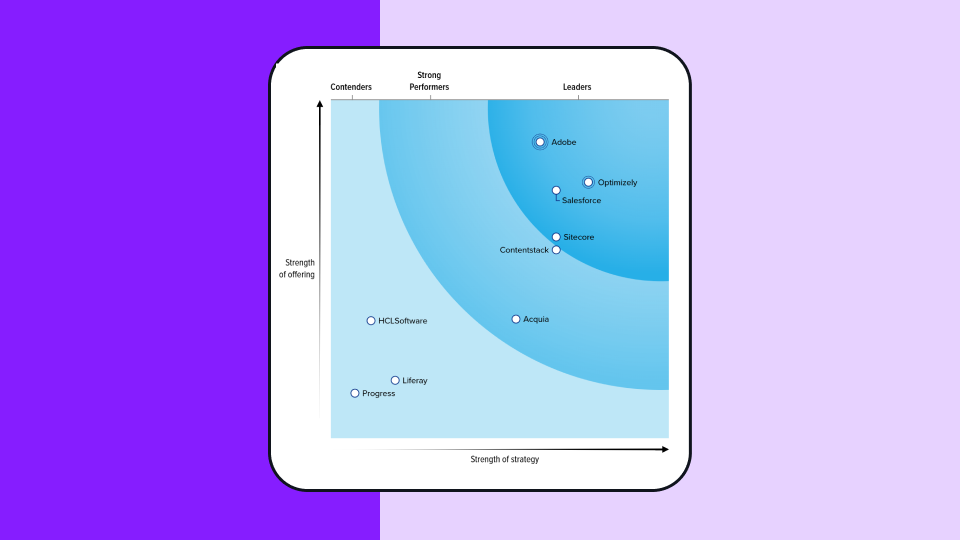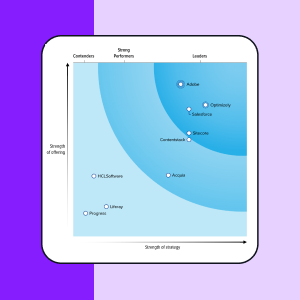Call to action
What is a call to action (CTA)?
A call to action is a visual prompt on a website or mobile app that encourages the user to take a specific action. It’s typically written as a command or action phrase, such as sign up, buy now, or join and generally takes the form of a button or hyperlink.
In digital marketing this can take the form of the text on a button (a CTA button) or a web link and in email campaigns CTAs are often links to a webpage where the user can take further action.
The goal of a CTA is to entice your target audience with either effective copywriting or dynamic visuals to continue to the next stage of the customer journey.
Why is a call to action important?
CTAs create a sense of urgency for the user to take a desired action. They are key elements on a webpage that act as signposts to let the user know what to do next. Without a clear CTA, the user may not know the next steps to take to purchase a product or sign up for a newsletter and is likely to leave the site without accomplishing their task.
Effective CTAs make it easier for potential customers to know what to do next by removing friction and moving the user down the sales funnel. They can even persuade the users who are still on the fence by hitting them with compelling copy or a visually engaging web element like a button or a banner at just the right time.
There can also be multiple calls to action on a page if there are multiple desired actions for the user to take.
For example, if a reader lands on a blog article and there is no clear call to action at the bottom of the post, it is likely that the reader will leave the site without completing any other tasks. However, if there is a CTA at the bottom of the post asking them to read more articles or to sign-up for an email newsletter, that can encourage them to continue interacting with the site.
Types of CTAs
There are many different types of CTA examples that traverse all industry verticals, so a CTA can take many forms depending on the context. A call to action can be a closing statement in a blog post, a line in an email, a pop-up, or a CTA button on a website.
Here are some call to action examples you might typically see on any given website or app:
-
Content Marketing
Any content marketing strategy will rely heavily on CTAs in order to keep website visitors on site as long as possible. Blogs, in particular, will carry multiple CTAs since they typically feature a wide array of users and types of content.
Each piece of content should contain CTAs loaded with action verbs like read, see more, learn, and share. This not only boosts the user experience, but also works well for improving SEO.
Some examples of CTAs you might find in content pieces are:-
Read more articles
-
Sign-up for our email list or newsletter
-
Support our sponsor
-
Watch our latest webinar
-
Share on social media
-
-
Lead generation
For B2B companies, CTA copy will often encourage users with a condensed value proposition in order to entice them to take further action.
CTAs for B2B companies should capitalize on user behavior in order to surface the most relevant messaging for where customers are at in the buying cycle.
For a B2B company, call to action buttons could feature text such as:
-
Get started
-
Sign up
-
Start Your Free Trial
-
Contact Sales
-
-
Ecommerce
Many ecommerce brands will rely on email marketing, out of home marketing campaigns, Facebook ads, and other types of direct to consumer advertising for customer acquisition.
An effective call to action clearly communicates what the user can expect when they click on a button or take the next action, which can improve click-through rates and conversions.
Whereas on an ecommerce site, the CTAs may be more commercially focused:
-
Add to cart
-
Checkout
-
Buy now
-
Shop now
-
Add to wishlist
CTAs can also take the form of... you guessed it... contact forms.
If you’re any type of commerce company (D2C, B2B, B2C, etc.), your contact CTA can be featured on your homepage any of your product or pricing pages as a contact form that will include contact information like:
-
Full name
-
Phone number
-
Email
-
Company information
-
Brief message
In each case, the CTAs on the page tell the user what action to take next to continue interacting with the site and moving further down the conversion funnel.
-
How to create compelling calls to action
Marketers employ a number of strategies for creating effective CTAs. Below is a list of some of the best CTAs:
Good design
The best calls to action need to grab the user's attention, so a bright button color that contrasts with the color of the page or an email is an effective strategy.
High visibility
Because the call to action should be the most noticeable thing on the page, the font size should be large enough to command attention.
Clear benefit
Stating a clear benefit that the user will get from completing the transaction is an effective way to get them to click.
Actionable text: A call to action, as its name implies, is designed to compel the user to take action, so an effective CTA should use action words such as "discover", "learn more", and "buy now".
Short in length
A good call to action should be a short phrase, not a sentence. Most are no longer than five to seven words.
Sense of urgency
Users are easily distracted on the internet, so a strong sense of urgency such as a limited time offer can help compel users to take action immediately instead of putting off taking action.
How to use A/B testing to test CTAs
Every audience responds differently to various calls to action. There is no guarantee that one call to action will outperform another.
The overall success of a call to action can be measured via a conversion rate formula that calculates the number of clicks divided by the number of impressions, or times the CTA was seen.
To test the effectiveness of various calls to action on your website or landing page, you can use an A/B testing platform like Optimizely. This will eliminate any guesswork and give you data-backed information that helps you optimize for CTA's with the highest conversion.

